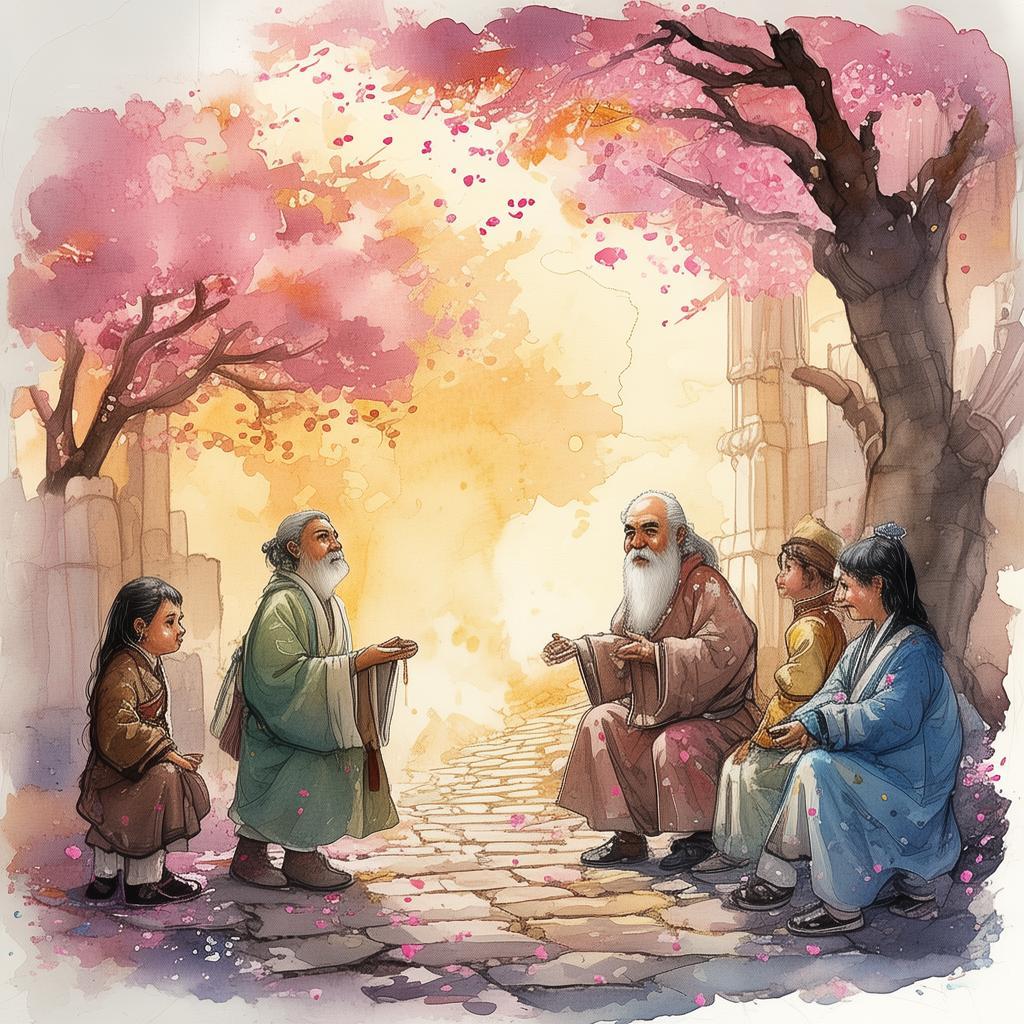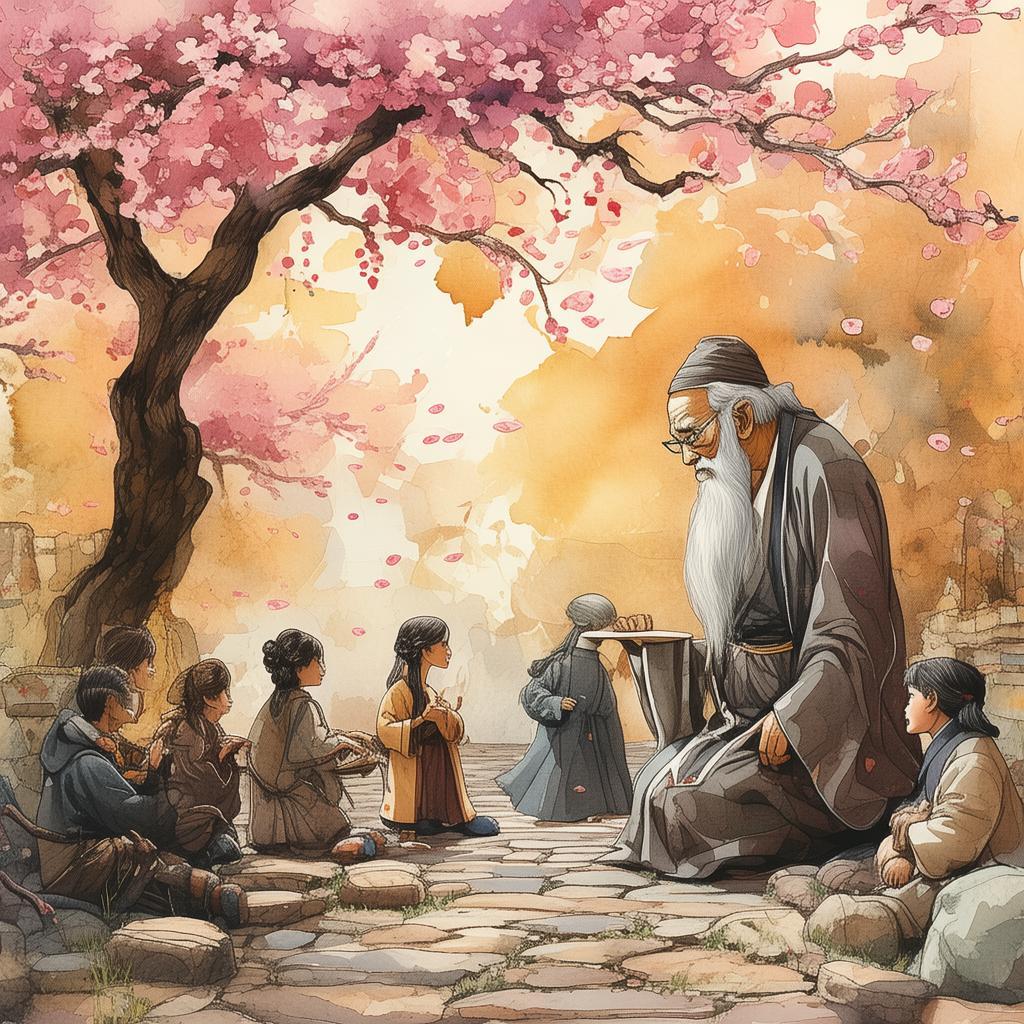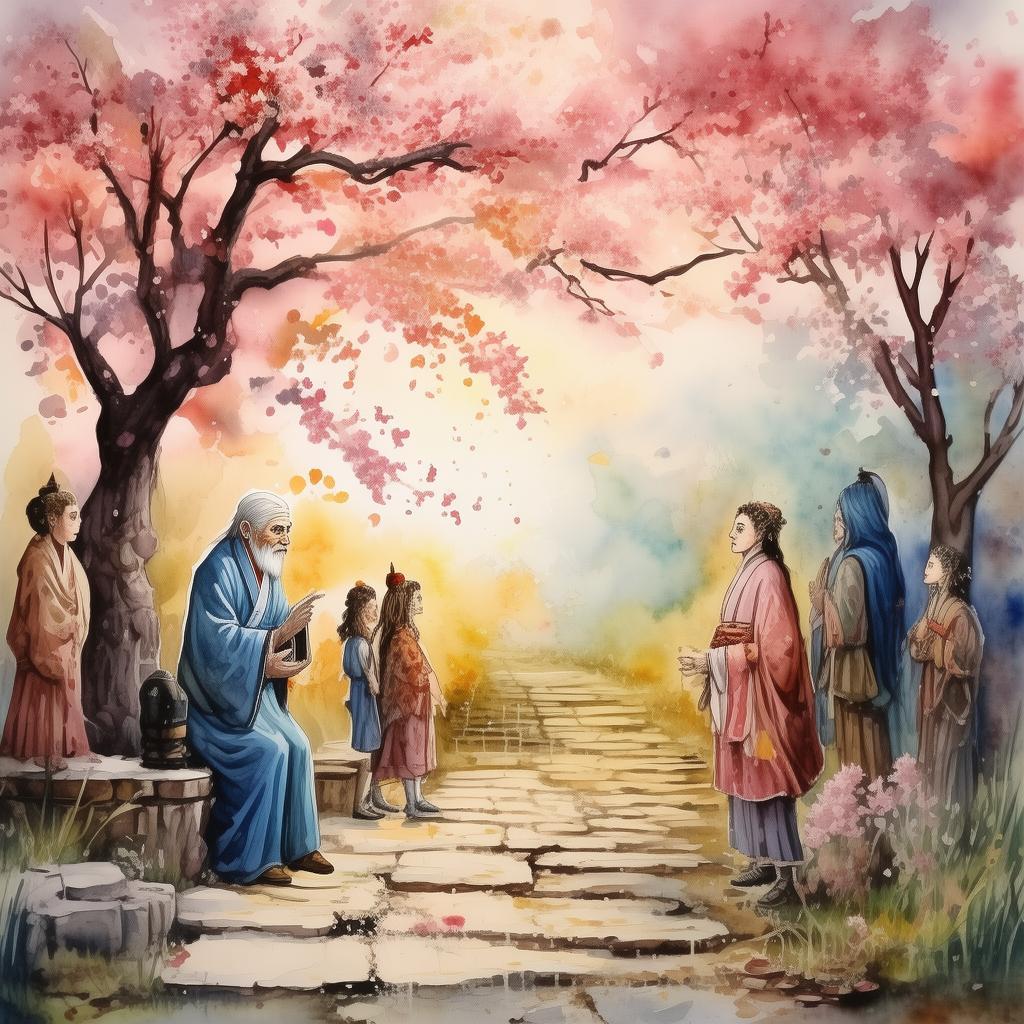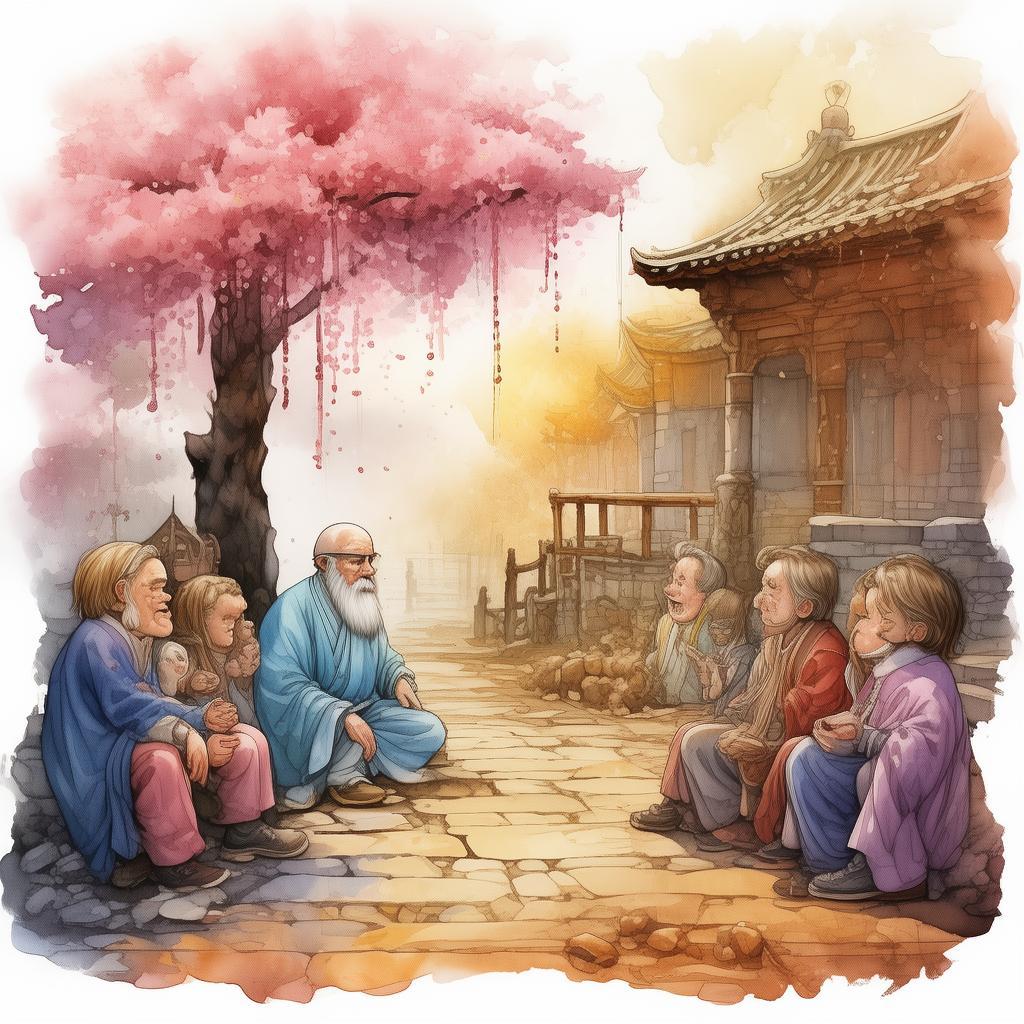The Luminous Leap: A Star-Crossed Idiom
In the bustling town of Jinyang, there lived a young astrologer named Ming. Known for his profound understanding of the heavens and earth, he was said to be the reincarnation of the ancient sage who first charted the stars. Ming spent his days gazing up at the celestial tapestry, trying to unravel the mysteries of the cosmos.
One fateful night, as the full moon bathed the sky in a silver glow, Ming saw a celestial ladder stretching from the stars down to his feet. According to a rare book in the town’s library, this was the Ladder to the Stars, a mythical structure said to grant those who ascend the ability to traverse the heavens. The sight was a revelation that would change Ming’s life forever.
Determined to climb the celestial ladder, Ming sought the counsel of the town's wisest elder, Master Yuan. "The ladder is no ordinary path, Ming," Master Yuan warned. "It is a journey filled with peril and a test of one’s soul. Only the pure of heart may ascend it."
Armed with this wisdom, Ming set out on his quest. He journeyed to the highest mountains, seeking out the most ancient texts and seeking the blessings of deities. His determination grew as he faced numerous challenges, each testing his resolve and his understanding of the stars.
One such challenge came in the form of a cunning fox spirit, said to guard the entrance to the celestial realm. Ming, using his astrological knowledge, discerned the fox's weak spot, and with a deft movement, outsmarted the spirit. The fox, defeated, revealed that the real challenge was not to climb the ladder but to understand the meaning of the idiom "as distant as the heavens."
Determined to unravel this enigma, Ming sought the aid of an ancient sage, who lived in a remote hermitage nestled in a dense bamboo forest. The sage, perched atop a craggy cliff, watched as Ming approached. "You seek the meaning of the heavens, but you must first understand that the stars are not merely points of light but reflections of our own hearts," the sage advised.
Taking this as his next guide, Ming meditated and reflected upon his own life and the lives of those he knew. He realized that the true meaning of "as distant as the heavens" was not the physical distance but the distance between understanding and enlightenment.
As the days passed, Ming felt the weight of his realization. The celestial ladder, which once seemed so close, now felt impossibly far. He understood that the true journey was not just up the ladder, but into the depths of one’s own being.
One evening, as he gazed once more at the stars, Ming felt a surge of determination. He would climb the ladder, not just physically, but spiritually. With this new understanding, he set off once more.
This time, instead of struggling against the celestial forces, Ming surrendered to them. As he reached the top of the ladder, he found himself face-to-face with a vision of the universe, a grand, infinite expanse that dwarfed his own existence.
With a profound sense of peace, Ming realized that the ladder was a metaphor for the human journey towards enlightenment. It was not a literal climb, but a symbolic one—a journey of self-discovery and the pursuit of wisdom.
As he stepped off the ladder, Ming found himself back in Jinyang, the world now illuminated by the light of his new understanding. He had returned with a tale to share, an idiom that transcended time and space.
And so, the story of Ming, the astrologer who climbed the celestial ladder, became a legend that echoed through the ages, teaching that the true distance is not between us and the stars, but between us and our understanding of the cosmos.
In the bustling town of Jinyang, there lived a young astrologer named Ming. Known for his profound understanding of the heavens and earth, he was said to be the reincarnation of the ancient sage who first charted the stars. Ming spent his days gazing up at the celestial tapestry, trying to unravel the mysteries of the cosmos.
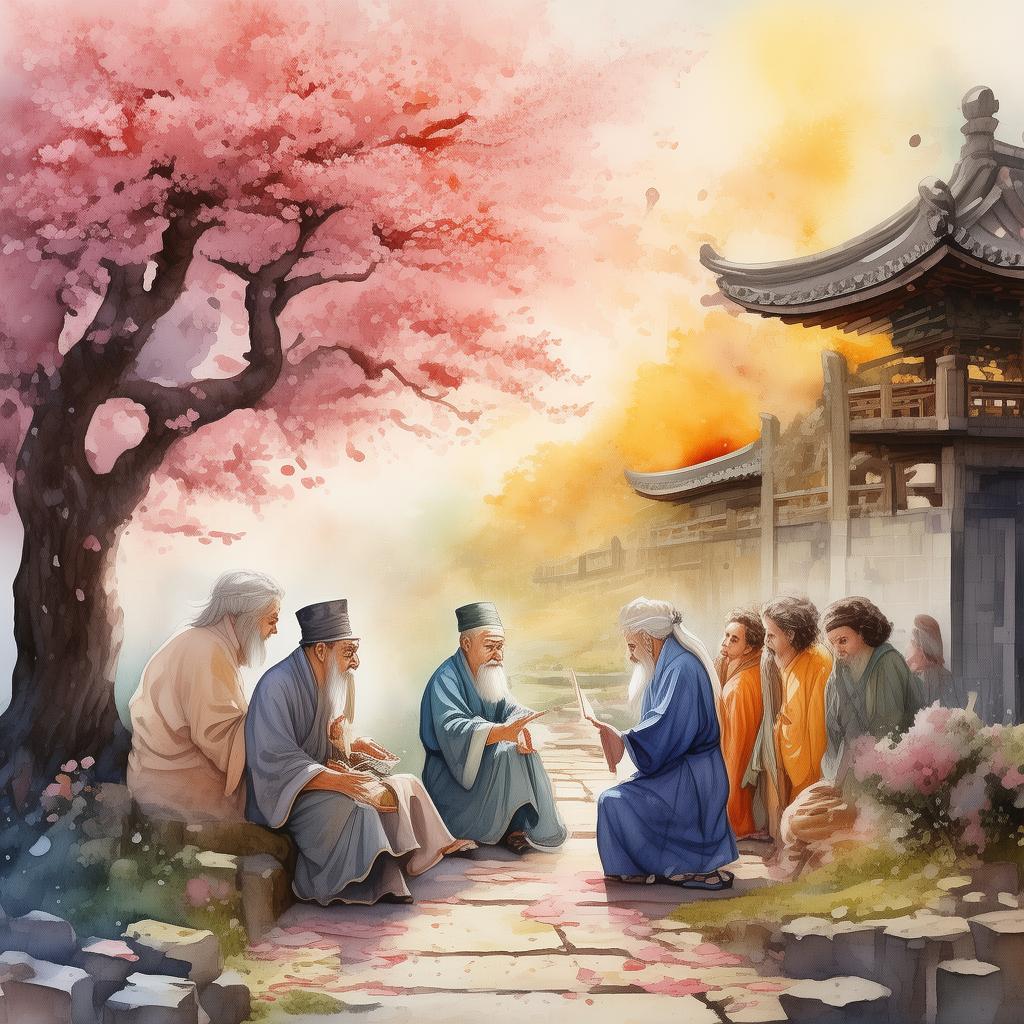
One fateful night, as the full moon bathed the sky in a silver glow, Ming saw a celestial ladder stretching from the stars down to his feet. According to a rare book in the town’s library, this was the Ladder to the Stars, a mythical structure said to grant those who ascend the ability to traverse the heavens. The sight was a revelation that would change Ming’s life forever.
Determined to climb the celestial ladder, Ming sought the counsel of the town's wisest elder, Master Yuan. "The ladder is no ordinary path, Ming," Master Yuan warned. "It is a journey filled with peril and a test of one’s soul. Only the pure of heart may ascend it."
Armed with this wisdom, Ming set out on his quest. He journeyed to the highest mountains, seeking out the most ancient texts and seeking the blessings of deities. His determination grew as he faced numerous challenges, each testing his resolve and his understanding of the stars.
One such challenge came in the form of a cunning fox spirit, said to guard the entrance to the celestial realm. Ming, using his astrological knowledge, discerned the fox's weak spot, and with a deft movement, outsmarted the spirit. The fox, defeated, revealed that the real challenge was not to climb the ladder but to understand the meaning of the idiom "as distant as the heavens."
Determined to unravel this enigma, Ming sought the aid of an ancient sage, who lived in a remote hermitage nestled in a dense bamboo forest. The sage, perched atop a craggy cliff, watched as Ming approached. "You seek the meaning of the heavens, but you must first understand that the stars are not merely points of light but reflections of our own hearts," the sage advised.
Taking this as his next guide, Ming meditated and reflected upon his own life and the lives of those he knew. He realized that the true meaning of "as distant as the heavens" was not the physical distance but the distance between understanding and enlightenment.
As the days passed, Ming felt the weight of his realization. The celestial ladder, which once seemed so close, now felt impossibly far. He understood that the true journey was not just up the ladder, but into the depths of one’s own being.
One evening, as he gazed once more at the stars, Ming felt a surge of determination. He would climb the ladder, not just physically, but spiritually. With this new understanding, he set off once more.
This time, instead of struggling against the celestial forces, Ming surrendered to them. As he reached the top of the ladder, he found himself face-to-face with a vision of the universe, a grand, infinite expanse that dwarfed his own existence.
With a profound sense of peace, Ming realized that the ladder was a metaphor for the human journey towards enlightenment. It was not a literal climb, but a symbolic one—a journey of self-discovery and the pursuit of wisdom.
As he stepped off the ladder, Ming found himself back in Jinyang, the world now illuminated by the light of his new understanding. He had returned with a tale to share, an idiom that transcended time and space.
And so, the story of Ming, the astrologer who climbed the celestial ladder, became a legend that echoed through the ages, teaching that the true distance is not between us and the stars, but between us and our understanding of the cosmos.
✨ Original Statement ✨
All articles published on this website (including but not limited to text, images, videos, and other content) are original or authorized for reposting and are protected by relevant laws. Without the explicit written permission of this website, no individual or organization may copy, modify, repost, or use the content for commercial purposes.
If you need to quote or cooperate, please contact this site for authorization. We reserve the right to pursue legal responsibility for any unauthorized use.
Hereby declared.
